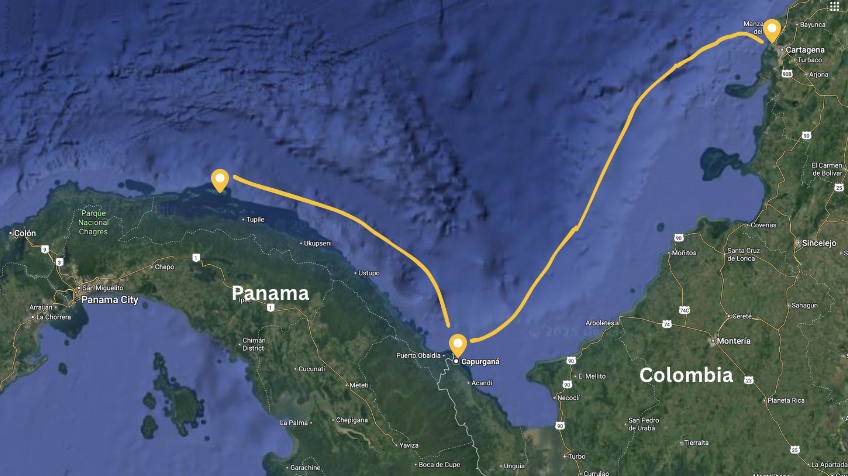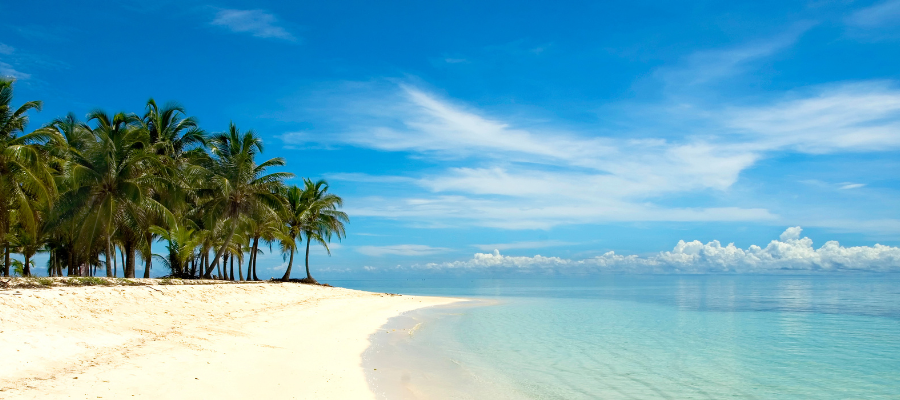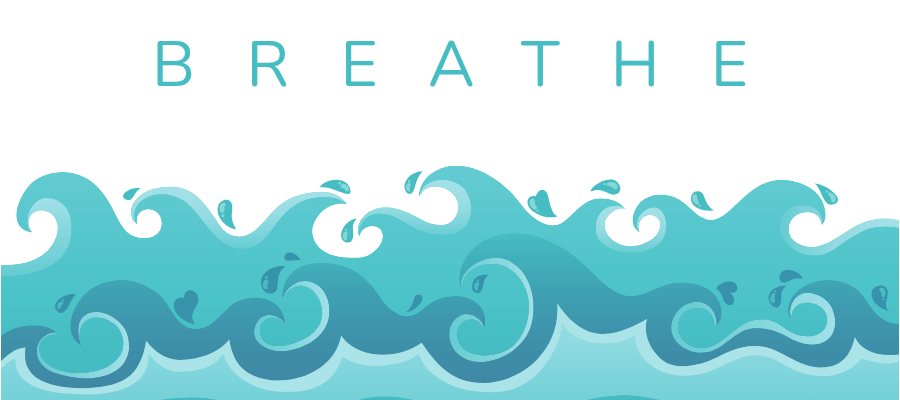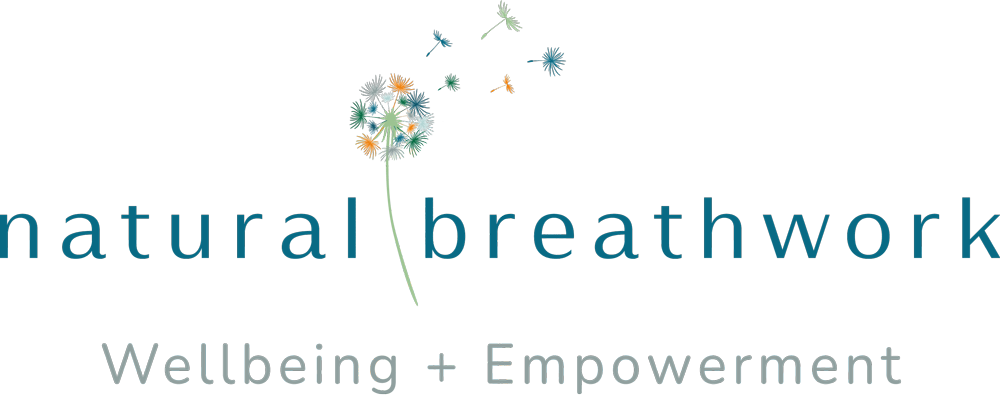The boat journey that taught me to trust the waves of life
In 1996, I booked a one-way ticket to Ecuador to go backpacking through South and Central America. I’d been travelling for about three months when I met two Icelandic guys in Colombia who were heading north like me, and we decided to travel together.
Back then, you couldn’t just book a one-way flight from South to Central America unless you were a citizen or had paperwork proving your onward plans. We had no tickets, no exit visas, and no real options for overland travel. The infamous Darién Gap – the dense stretch of jungle between Colombia and Panama – is impassable to most. Swamps, drug cartels, malaria, guerrillas, no roads or infrastructure. Not safe. Not doable.
So the only real way forward was the sea – something of a legendary backpacker route in the ’80s and ’90s.
This was no pleasure cruise!
We didn’t go on a tourist boat. There were no rum punches, no hammocks strung up under canvas. Just a heavy, low-slung cargo boat, stacked with sacks of rice, crates of soft drinks, plastic jerry cans, and a scattering of passengers – mostly locals, who looked like they’d done this journey before.
We boarded in the dark at 5am. There were no tickets, no GPS, no life-jackets handed out, no safety briefing and no English spoken.
We laid our gear down on the deck and made ourselves comfortable. The locals, meanwhile, seemed uncomfortably perched on top of the crates, higher above the deck, which appeared a bit odd, but we were too tired to think about it.
We’d been up partying all night and hadn’t yet gone to bed as we thought we’d sleep on the boat. We hadn’t been asleep that long when the weather changed. Waves started crashing over the deck – and over us. We scrambled awake, everything drenched: bags, clothes, sleeping bags. Above us, the locals remained dry, watching the dozy foreigners with a mix of amusement and pity.
Now we understood why they’d chosen to perch up high under the canvas roof!
The journey, meant to take 18 hours, dragged on for 28, due to the rough seas. And because life likes to test you all at once, my period arrived unexpectedly. I had no tampons, no pads, no supplies at all, and precious few pain killers for my terrible cramps. On top of that, the toilet, obscured from view by cargo, was a makeshift wooden cubicle with no door, bolted to the side of the boat, open at the top and with no floor. You had to wedge your feet onto inch-wide wooden struts, hang onto the door frame and hover a couple of meters over open ocean – hoping you didn’t fall in.
I was miserable, but still, I didn’t panic. I felt strangely calm – not because things were fine, but because somewhere deep inside, I was trusting life and knew we’d be okay.
And that was just the first leg.

It was bad – but it was not my day to die
When we finally reached land – not Panama, as we’d been led to believe, but the northernmost tip of Colombia – we had to find another boat to carry us north through the San Blas Islands to Panama.
This is when things got dangerous.
A local guy was offering to take people the 40+/- nautical miles on his lancha – a long, narrow, canoe-like wooden boat with a single outboard motor. It wasn’t an official service, and it looked a bit dodgy, but we and the other passesngers who were looking for a ride north were tired and eager to move. Plus, we were told he was the only option, so we climbed aboard.
Among the group were two Nigerian footballers – huge, athletic men on their way to a professional trial in Panama, an Italian sea captain who was simply travelling, a British man with his Guyanese wife and their three-year-old daughter, me and my two friends, and a handful of others. We suspected it was well overloaded, but we didn’t realise quite how big a problem that was going to be.
A few miles into the journey, the sky darkened, the wind started blowing and the engine cut out. Waves grew. Water began flooding the boat.
People began to panic. The Nigerian guys – tall, strong, but unable to swim – were frozen with fear.
There weren’t enough containers to bail with, and we were taking on a lot of water, so, making an immediate assessment that we’d probably sink before we died of thirst, I cut the bases off two large drinking water bottles with my trusty Swiss Army knife so we could use them to bail with, and thrust them into the hands of the Nigerians, snapping them out of their freeze state so they could help us to bail.
People were scared.
But I had a really strong feeling that this wasn’t my day to die.
I was more worried about getting my backpack wet again. And even as we edged dangerously close to the rocks, I still felt, bizarrely, that we would be okay. Still trusting life.
A couple of times they were able to get the boat started again and we’d make progress for a few miles, but then it would cut out. We drifted closer to danger. The Italian sea captain later told me – once we were safely on land – that we had come very close to being smashed to pieces on the rocks.
Eventually – miraculously – we were spotted by the Panamanian Coastguard. They towed us to the next island.
We were safe.
But we were also stranded.
Surviving one crisis, witnessing another
There were no boats expected so we had to pay a fortune and wait three more days for a tiny micro-plane to come and fly us to Panama City.
This tiny little island, part of the San Blas archipelago, was home to Panama’s passport control – nothing more than a concrete hut with a couple of officials. And it was there that we met another form of crisis: racism.
The border guards let the white passengers through. But they refused entry to the two Nigerian men, and to the Guyanese woman and her daughter. They claimed their documents weren’t valid. It wasn’t true – it was discrimination, plain and simple. These guards had just enough authority to make life difficult for people of colour, and they used it.
We later heard from the locals that the footballers were sent back on a boat to Colombia – forced to repeat the hellish journey we had just survived.
The British husband had to fly with us to Panama City to sort out paperwork so that his wife and daughter could join him. In the meantime, they were stuck there. Imprisoned and alone. Powerless.
There was nothing we could do. It was unjust, shocking, and shamefully normalised there at that time.

When life goes sideways
We thought it would be a simple sea crossing.
Instead, it became chaotic, exhausting, frustrating – and, for some, terrifying.
But in the end, we made it.
Not the way we’d planned. Not on time. And not in dry clothes.
But we were held – by the sea, by strangers, by unseen forces that somehow pulled us back to shore.
Life doesn’t always offer safe passage.
But it does offer passage.
And sometimes, when the boat is flooding and you’re more worried about your backpack than your life, you realise:
Trusting life isn’t passive.
It’s active surrender – a willingness to ride the swell, even when the engine fails, believing something greater is steering.
I couldn’t explain it back then, but I felt it:
I was being held.
By life itself.
What this journey taught me
We all have moments like this.
Moments when everything goes sideways and you don’t know what to do.
Sometimes we witness injustice and can’t fix it.
Sometimes we’re afraid, or hurting, or helpless.
And all we can do is stay present – with ourselves, and with each other.
And in those rawest, most uncertain moments, we can find a deeper truth:
We’re not here to control the waves.
We’re here to stay afloat, stay awake, and let life move us – even when we have no idea how.
Trust isn’t always gentle.
It can be wild, wet, inconvenient, and totally unexpected.
Surrender isn’t giving up – it’s letting go enough to let support in.
And being held by life?
It doesn’t mean things go to plan.
It means you’re still here. Still breathing. Still carried – even through the chaos.
This story could have ended very differently.
But it didn’t.
We made it.
And years later, I can say:
That journey taught me how to trust life.
Not because I was in control.
But because I wasn’t… and still, I was carried.

When life feels like a storm…
If you feel like you’re in the middle of your own storm…
If things haven’t gone to plan, the pressure is building, or you’re just trying to hold it all together…
If you long for calm but can’t seem to find your footing…
Take a breath.
Not just any breath – a conscious breath.
Because this is what helps me now.
Back when I was travelling, it was easier to trust the flow of life. I had fewer responsibilities, fewer distractions, and I could respond instinctively, moment to moment.
But these days, when life gets loud, too much and time feels short, it’s my breath that brings me back.
Conscious breathing helps me discharge stress, emotional overwhelm, and anxiety, so I can meet life as it is, not as I wish it was. It reconnects me to the quiet knowing and trusting life like I did back then, in far more precarious places.
It doesn’t always fix things.
But it helps me stay with myself, soften the fear, and open to the support that’s here – even when I can’t see it yet.
Want to rebuild trust in yourself and in life?
Breathwork is a powerful tool to regulate your nervous system, calm your mind, and reconnect to your deeper knowing – that part of you that remembers you are held.
🔹 Book a free discovery call here
🔹 Or download my free Breathwork Toolkit to start now
Let’s explore what’s possible when you’re not holding it all alone.
If something in this article resonates with you, do leave a comment below and share with someone who you feel might need to read it.


0 Comments